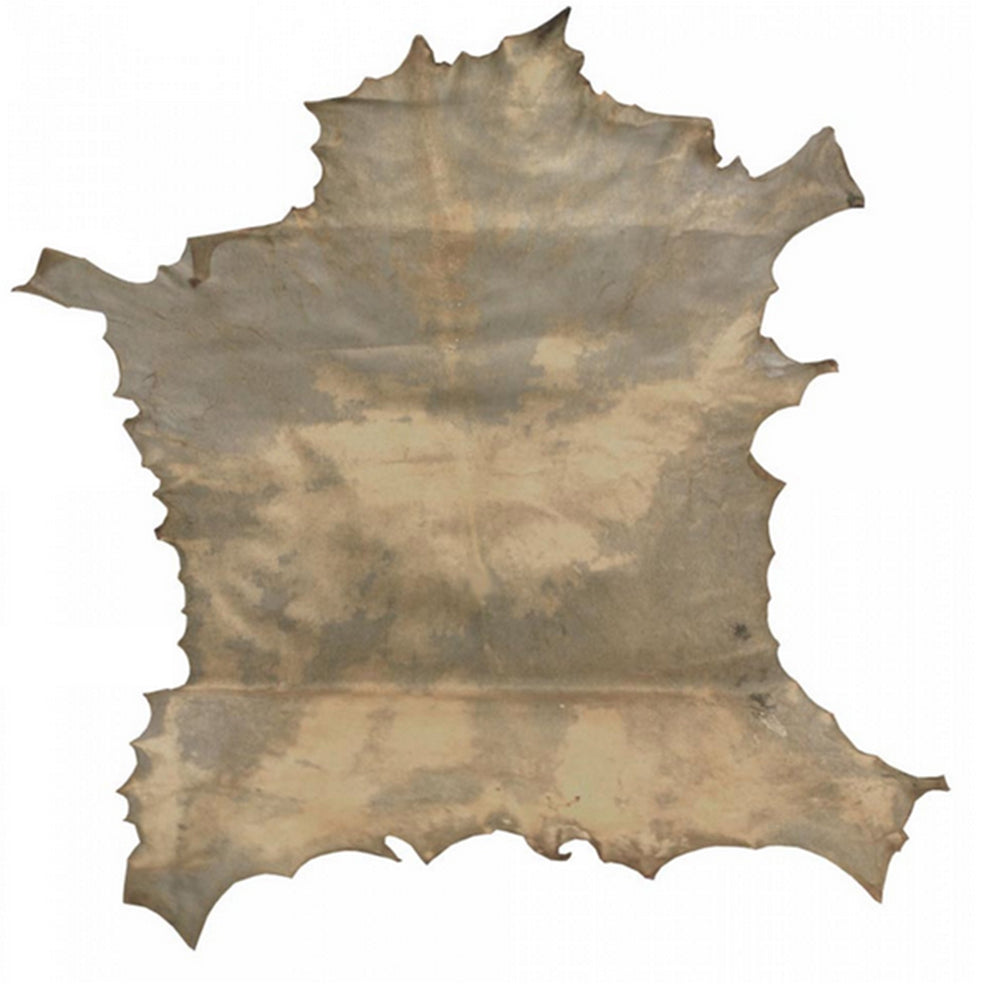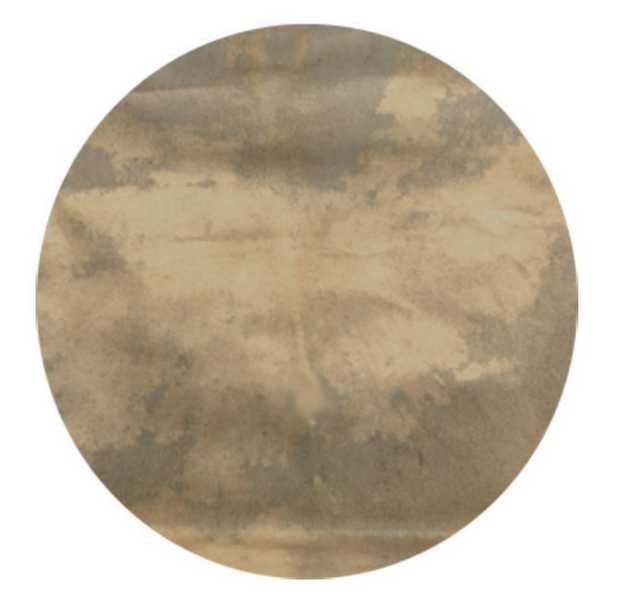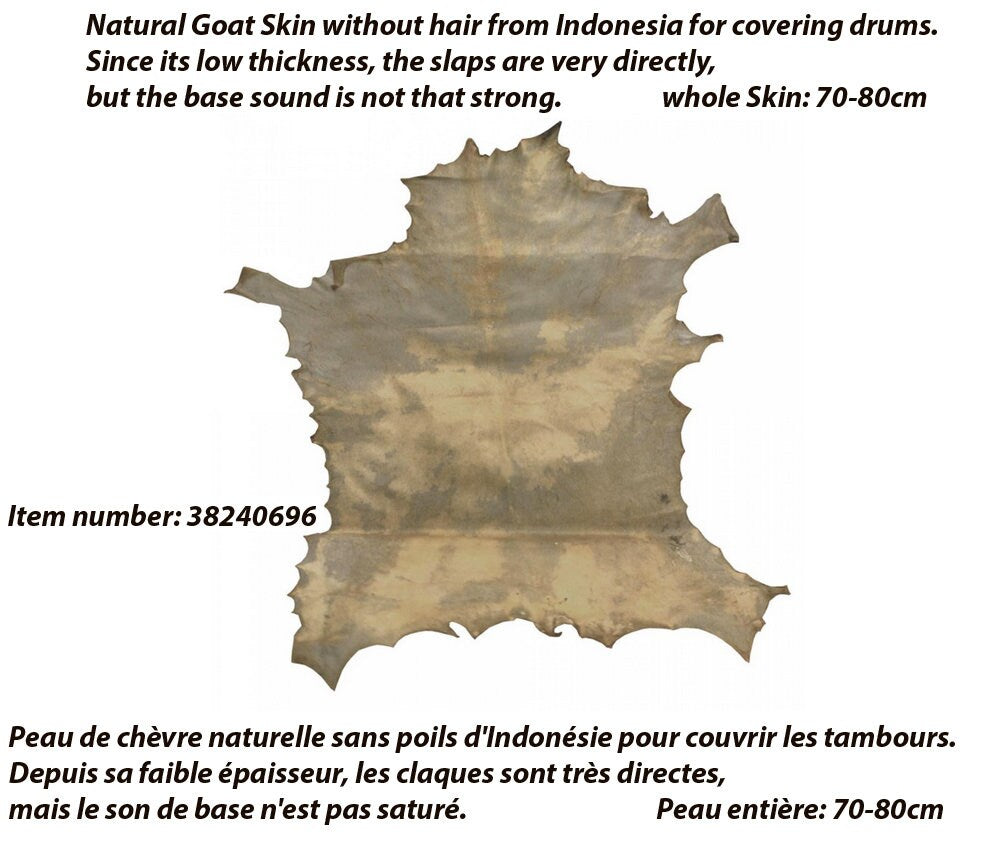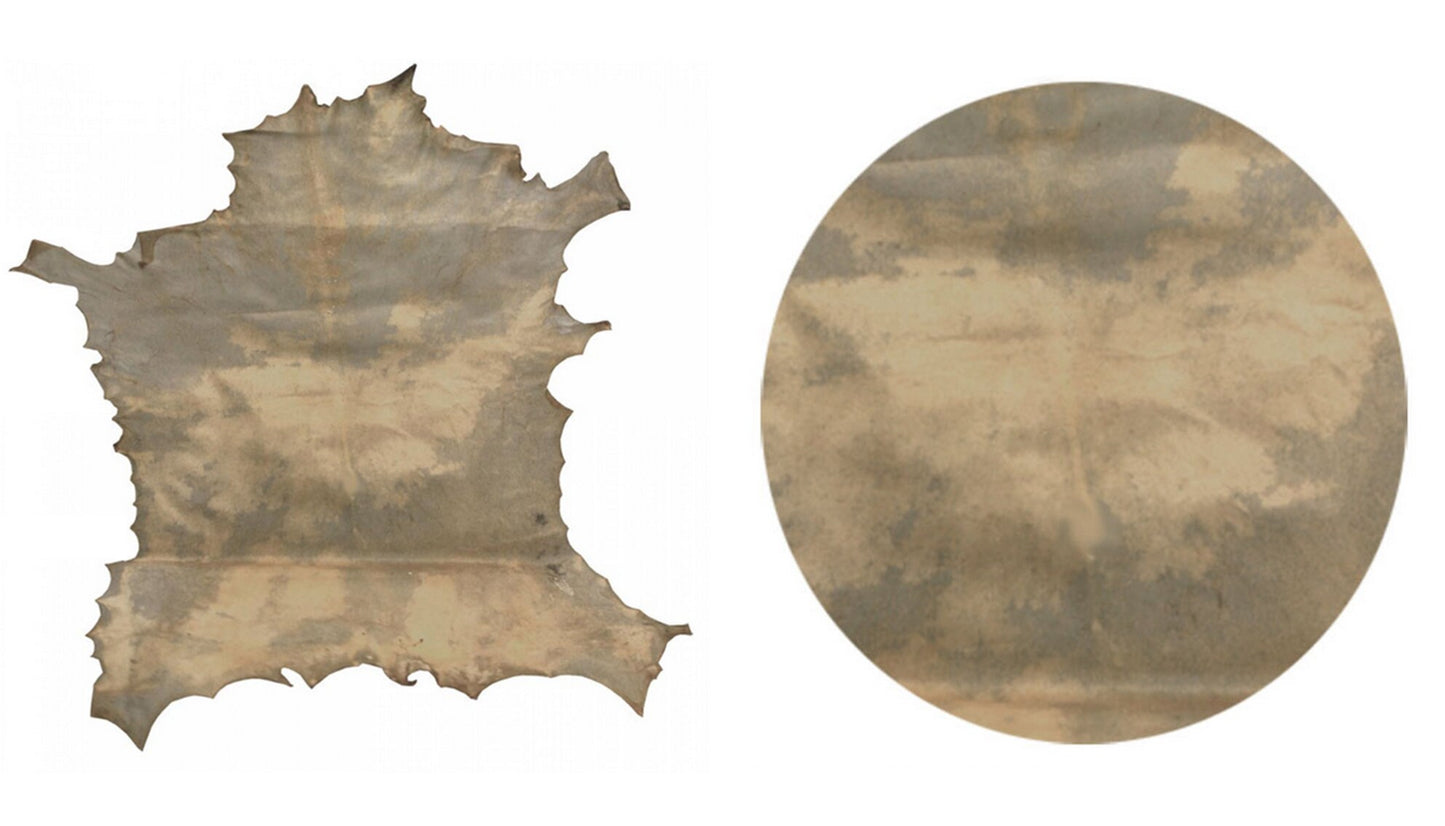Goat skins, tanned finish, round or whole, available from 30 to 80 centimeters, very good quality, perfect for your creative workshops, restoration of drums, djembe...!
Goat skins, tanned finish, round or whole, available from 30 to 80 centimeters, very good quality, perfect for your creative workshops, restoration of drums, djembe...!
Couldn't load pickup availability
About the product:
- Tanned goat skins
- Available from 50 to 90 centimeters
- Very good quality
- Perfect for your creative workshops
- Perfect for making your own drums
👉 Advice for choosing the size of a skin:
Generally, 8 to 10 cm of margin is added all around the circle.
For a 30 cm diameter drum, you will need a skin approximately 45 to 50 cm in diameter.
This will allow:
- To have enough material for tension,
- To prevent the skin from tearing, and to ensure good sound once dry and stretched.
👉 Other options on order on materials and different finishes possible:
Depending on available stocks and skin quotas per manufacturer, delivery may vary from 1 to 3 weeks,
Many skins available on request:
INDIAN GOATS: Goats originating from India, particularly the Madras region. Economic developments have meant that the first tanning and selection are now carried out in this country. For bookbinding, the goats are tanned exclusively with vegetable tannins.
LOCAL SHEEP: Sheep selected from breeds in Aveyron and the Centre for the finesse of their grain. The dehairing and tanning are carried out in France, and for bookbinding, they are exclusively tanned with vegetable tannins. The hides for the Parchments are also selected from these sources: the whitest and with no physical defects.
VEGETABLE SHEEP: Sheep originating from Australia or New Zealand, the common name is "Basane". Dehairing and tanning were traditionally carried out in the Mazamet region. The flowers are coarser than European breeds.
CAPE GOATS: A particular breed from South Africa, large in size and very thick, with a very pronounced round grain.
OASIS: A common name for Nigerian goats that have undergone artisanal pre-tanning in a pit with vegetable tannins on the farm. They have an elongated grain in the direction of the backbone. Retanning and dyeing, after selecting the best choices, is carried out in France.
DEER and FALSE: Hides from French and New Zealand farms. Lower-quality hides will mainly be processed using "Chamoisé" tanning for use on meat. The best leathers, without grain defects, will be used for chrome tanning for high-end clothing.
👉 Working with skins:
COLLECTION: Generally carried out in slaughterhouses which separate the skin from the carcass and salt the leathers for temporary preservation before tanning operations. The skin is then called "fresh or raw salted"
RE-GREENING: The tanner soaks the salted hides to remove dirt and restore their moisture content. The hides are chemically depilated to remove the hair and epidermis. The hide is then called "tripe"
FLESHING: Fat and adhering flesh are mechanically removed.
DELIMMING: Chemical process that prepares the skin to subsequently absorb tannins.
TANNING: Chemical transformation of the skin into leather by fixing tannins in the fibers. The leather can then be preserved. The tannin (mineral, vegetable or synthetic) determines the destination of the product.
DYEING: Coloring the leathers in full bath in barrels. Generally at this stage, the leathers are also "retanned" by adding food oils and tannin supplements, which permanently give them suppleness, strength and a base color.
PREPARING FINISHING: After the so-called “wet environment” work, the leathers are prepared for finishing.
BRONZING: Mechanical operations which modify the mechanical characteristics of the leather to obtain a marketable product.
- Wringing: Presses the leathers to expel excess water. - Skiving: Reduces the thickness by "planing".
- Stretching: Flattens the leathers - Splitting: Adjusts the thickness by separating the crust from the grain. - Drying: Gives the leathers a stable moisture content.
- Palisson: Softens leathers through a controlled effect on the internal fibers.
- Sanding: Action of abrasion of the grain of the leather, allows to obtain Nubuck or a “corrected grain” support suitable for pigmentation.
- Velveting: The action of abrading the flesh of the leather, which produces velvet, commonly called “suede”.
FINISHING: Finishing operations vary greatly depending on the intended use of the products. It involves applying primers and varnishes to the surface of the leather.
We distinguish:
- Aniline Finish: refers to finishes applied to full grain, transparent appearance
- Semi Aniline Finish: refers to finishes applied to slightly veiled flowers, semi-transparent appearance
- Pigmented Finishing: refers to finishes applied to corrected flowers, veiled, covered appearance. These different finishes can receive relief prints imitating the appearance (the grain) of different animals, or fancy prints according to fashion trends.
- Fixing: An operation similar to varnishing leather, the final step determining its resistance to abrasion and water resistance. There are many aspects, from the most matte to the most shiny.
THE DIFFERENT TANNING METHODS:
DEFINITION: The skin substance, collagen, is made up of amino acids aligned like the links of a chain.
These collagen chains are linked together and fixed by the action of tannins, thus the fibers of the skin, made up of these chains, become rot-proof. It is this "crosslinking" called tanning that transforms the skin into leather.
MINERAL TANNING: Tanning in which different minerals are used. The most common is tanning with chromium salts, but also with aluminum.
VEGETABLE TANNING: Tanning using plant extracts. The most common are chestnut, oak, mimosa, sumac, and quebracho.
CHAMOISE TANNING: Tanning technique based on fish oil.
MEGIS WHITE TANNING: A tanning process that was revolutionary in the history of technology thanks to the discovery of the properties of alum salts (aluminum). This mineral was the source of the Medici fortune.
SYNTHETIC TANNING: Tanning that uses synthetically produced tannins, the composition of which is similar to that of vegetable tannins.
COMBINED TANNING: Refers to tanning processes that combine two families or types of tanning to obtain a result that combines the complementary qualities of the tannins used, for example Chrome-Vegetable or Chrome-Synthetic.
PARCHMENTING: This is a process that cannot exactly be described as "tanning," because the hide remains putrescible. Parchment can dissolve fairly quickly under the action of water.
However, desiccation, the main characteristic, gives this skin exceptional resistance and durability over time; provided it is not exposed to humidity.
BAUDRUCHE: A method of preserving intestines or bladders, which is similar to the treatment of parchment without being entirely similar. The implementation is extremely delicate and requires very specific know-how. The thickness obtained is close to one hundredth of a millimeter.
Share









